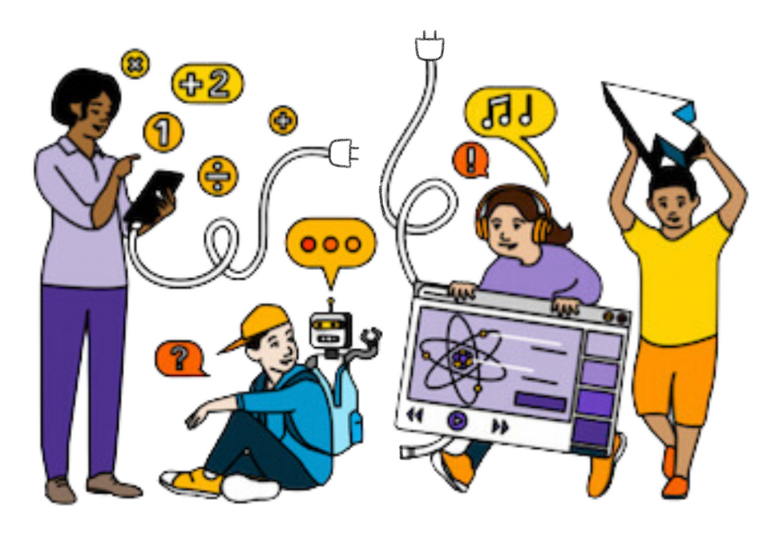
A Protocol for Collaborative Problem-Solving
My coaching work takes me to several schools to help school leaders and their teaching staff solve instructional and logistical problems while improving their teamwork dynamics. While systemic problems require extensive work to solve, there are tactical problems that can be resolved through a single meeting or just a few.
Needing a simpler yet collaborative approach for some of my partner schools to work through issues that aren’t overwhelmingly complex but still challenging enough to require thoughtful consideration and creative thinking to solve, I developed an adaptation of the traditional plus-delta protocol. I call the updated version the plus-delta-solution (PDS) protocol. A Protocol for Collaborative Problem-Solving The PDS strategy emphasizes effective collaboration and communication as crucial aspects of problem-solving within teams and in a manner in which everyone on the teaching staff feels safe contributing.
I have implemented the PDS protocol with school and district leaders and achieved good results. Moreover, this protocol can help teaching teams identify challenges to student success, leverage strengths, and, most importantly, find solutions, all while promoting shared problem-solving, which is currently needed in many schools. A Protocol for Collaborative Problem-Solving The protocol can also be modified for use with kids during lessons and projects and to create social awareness for classroom problems such as internet safety, digital citizenship, bullying, and social exclusion.
4 WAYS USING PDS CAN BENEFIT YOUR TEAM
1. It promotes structured communication. Drawing structured communication between colleagues creates a platform for everyone to share their ideas, observations, concerns, and solutions while keeping discussions focused. For instance, teams can use this approach to solve instructional issues such as curriculum enhancements, behavior management, and technology integration.
Logistical problems such as resource allocation, timetabling and scheduling, and after-school event planning can also be tackled by teams through structured communication.
2. It encourages the promotion of diverse perspectives. Establishing norms and shared agreements within the protocol can guarantee that everyone who wants to will speak or contribute, ensuring that different viewpoints are considered. This deliberate attention to inclusivity helps explore various angles of a problem and prevents tunnel vision.
3. It creates documentation and reviews. Using the protocol to document discussions, ideas, and solutions aids in tracking the team’s suggestions, concerns, and decisions. Documented materials can also be reviewed later to continue aligning goals and solutions and to avoid revisiting previously discussed points.
4. It establishes feedback and reflection mechanisms. When the protocol incorporates mechanisms for both feedback and reflection, team members work together to refine thoughts, practices, and approaches to community problem-solving. Doing so promotes a culture of learning and improvement throughout the school that can be transferred to students and other staff members.
A Protocol for Collaborative Problem-Solving The four-step protocol outlined below can be carried out in approximately 25–40 minutes. Whether facilitating with colleagues or students, feel free to customize and adapt directions and timings to serve the needs of your intended audience. Additionally, here are some graphics you can use to guide implementation.
4-STEP PDS PROTOCOL
Step 1: Allow the teaching team or school staff to state the problem (5–7 minutes). The purpose here is to arrive at a consensus on the problem that the team will address in the subsequent steps of the protocol. Sometimes, everyone arrives knowing the issue that needs solving, and sometimes, the facilitator has to inquire. The PDS protocol can be opened up according to the team’s needs in one of two ways. If the problem is already agreed upon before commencing with the protocol, that’s fantastic. If not, provide question prompts that allow colleagues to speak freely.
I use some of these when introducing the protocol during faculty meetings or professional development.
- “It’s hard to focus on instruction when behavior is a constant concern.”
- “I’m having difficulty with a specific management task.”
- “I’m struggling to keep up with the intended pacing in my lessons.”
- “I‘m overwhelmed by a constant challenge.”
Step 2: Individually identify pluses and deltas pertaining to the problem (4 minutes).
A Protocol for Collaborative Problem-Solving To promote a positive mindset toward problem-solving while identifying the difficulties associated with the problem(s) and using small posted notes, each team member identifies pluses (what’s working well) and deltas (the drawbacks, challenges, or areas that need improvement). Request that the team members not focus on solutions in this step.
- Identify two grade-level colleagues to work with.
- . Avoid redundancy by discarding posted notes with similar text.
- Have the teams discuss their pluses and minuses without focusing on solutions.
Step 4: Begin to develop answers (10–20 minutes).
A Protocol for Collaborative Problem-Solving Sometimes the room isn’t able to find a solution, and it’s fine to bring in an outside expert to help.
- In a posted note, offer solutions and/or resources to address the problem.
- Reconvene with your thought partner from Step 3 to discuss the solutions provided.
- Participate in reflection and open discussion with the entire team.
Problem-solving isn’t easy.

